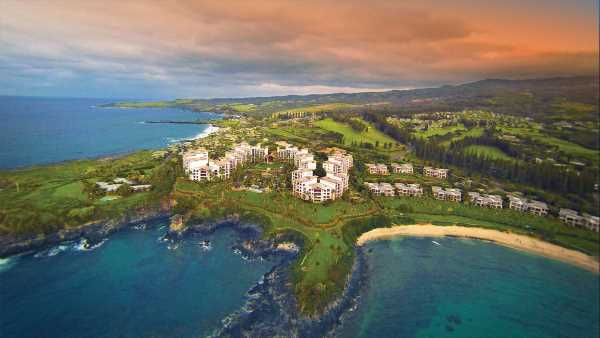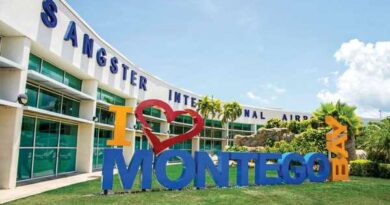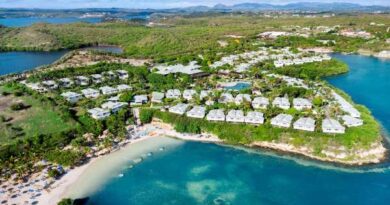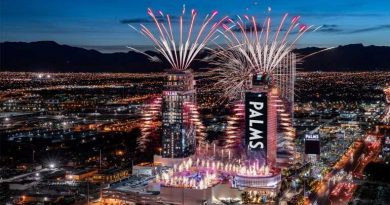Maui reopening post-fires, but visitors and revenue stay away
In the aftermath of the devastating West Maui wildfires in August, Kay Ryan, a California-based Maui specialist with Maui Vacation Consultants, has watched her business take a nosedive.
In more normal times, West Maui represents around 90% of Ryan’s total bookings.
“This is basically Pandemic 2.0 for me, without the pandemic unemployment assistance,” said Ryan, who, prior to relocating to Southern California, had lived in West Maui for 26 years.
“Impact on my business is drastic, as I have not had a single booking since the fires,” she added. “However, I trust that it will come back, and I am patiently waiting for that to happen.”
Many of Maui’s tourism stakeholders can’t afford to wait too much longer. Although the destination began a phased reopening of West Maui on Oct. 8, with a second phase kicking off Nov. 1, visitors have yet to come back in earnest.
The Hawaii Visitors & Convention Bureau estimated that Maui is currently losing out on up to $11 million per day in traveler spend, representing a major hit to the island’s tourism-reliant economy.
Additional data from the Hawaii Tourism Authority (HTA) indicates that compared with 2022, scheduled domestic air seats to Maui were down 22.3% in October and are on track to be down 23.3% in November and 20.8% in December.
The HTA anticipates further reductions in air seats if demand fails to pick up soon.
“We are in a crisis-level emergency,” said Sherry Duong, executive director at the Maui Visitors & Convention Bureau, who said she’s been meeting with members of the travel trade on the mainland, urging them to book clients to Maui sooner rather than later. “I met with advisors in California [in late October], letting them know that it’s important to tell their clients to come now, as opposed to waiting for 2024.”
Indeed, messaging from the Maui Visitors & Convention Bureau and other Hawaii tourism and government groups has heavily focused on the fact that the vast majority of Maui, apart from hard-hit Lahaina, is open and ready to receive guests. However, they are also stressing the importance of respectful travel to the island, as Maui’s residents are still grappling with the aftermath of the disaster.
“We want to make sure that travelers are aware of the situation and that Maui is not the same as it used to be,” Duong said. “Part of that is reminding people to have patience, as not all of our residents are back to work right now. And so, hotels, restaurants and activities may not be fully staffed yet.”
Additionally, the Maui Visitors & Convention Bureau is requesting that visitors carefully consider the questions they pose to local residents, including queries about the level of impact the wildfires have had on an individual.
“Just by asking someone that, although it sounds like you’re being supportive and concerned, can cause that person to have to rehash and relive the events,” Duong said. “Basically, everybody that lives there on the island, all 160,000 of us, were impacted, either directly or indirectly.”
Travelers are also being instructed to continue to steer clear of Lahaina and to not post photos or videos of the devastated West Maui town. If they come across locals gathering for a memorial service, they’re being asked to “quietly leave and not take any photos.” And to help boost Maui’s economy, spending with locally owned businesses is highly encouraged.
“These are all things that are impactful and show that they’re being a mindful traveler,” Duong said.
Residents will not be displaced
To get the word out to her clients, Ryan has similarly put out a social media memo promoting respectful travel to Maui, urging visitors to be generous with gratuities, build some volunteer time into their trips and pack donations — including sought-after items like new bed linens and bath towel sets.
Ryan acknowledged, however, that amid this flurry of messaging, clients still remain very much on the fence about traveling to Maui, with some continuing to harbor misconceptions about which areas are off-limits.
“Many do not really understand the geographical locations of the island,” Ryan said. “And people [are concerned] about food and restaurants, knowing that many of the Lahaina restaurants are now gone.”
Similarly, Hawaii’s tourism associations are working to address the mistaken belief that an influx of visitors could result in locals being pushed out of their temporary hotel and resort accommodations. Properties in West Maui tourist hubs Kaanapali and Kapalua are still providing shelter to residents who have lost homes, though government officials are working to move these residents into lodging more suitable for longer-term stays, including vacation rentals.
“On social media, there was this misconception of people getting immediately kicked out,” said Darlene Morikawa, senior director of public relations and destination management support for the Hawaii Visitors & Convention Bureau. “So, every opportunity we get, we say, with conviction, no one will be forced out of a hotel room.”
Robert Friedl, general manager of the Montage Kapalua Bay, which is still sheltering a small number of impacted employees and their families, echoed that sentiment.
“No visitor will displace a local resident, not with us or at any other property here,” Friedl said. “The No. 1 priority for us has been and still is the well-being of our associates, their families and the survivors that have lost everything.”
While the Montage Kapalua Bay has been open since Oct. 8, Friedl reports that the booking pace thus far is “significantly behind” prior years.
But with Maui’s whale-watching season kicking off and the winter holidays right around the corner, he predicts some progress.
“It’s a really good time for people to come, and we’re seeing a slow but steady uptick in bookings for festive,” Friedl said. “If the question is, ‘what can I do there?’ The answer is pretty much everything that you’re used to in this area is still happening. There are some restaurants and places you can’t visit anymore, but the beauty of nature is still here, the cultural aspect is still here. There are activations and activities that are open. And our message to our guests is that we want you here.”
Source: Read Full Article



